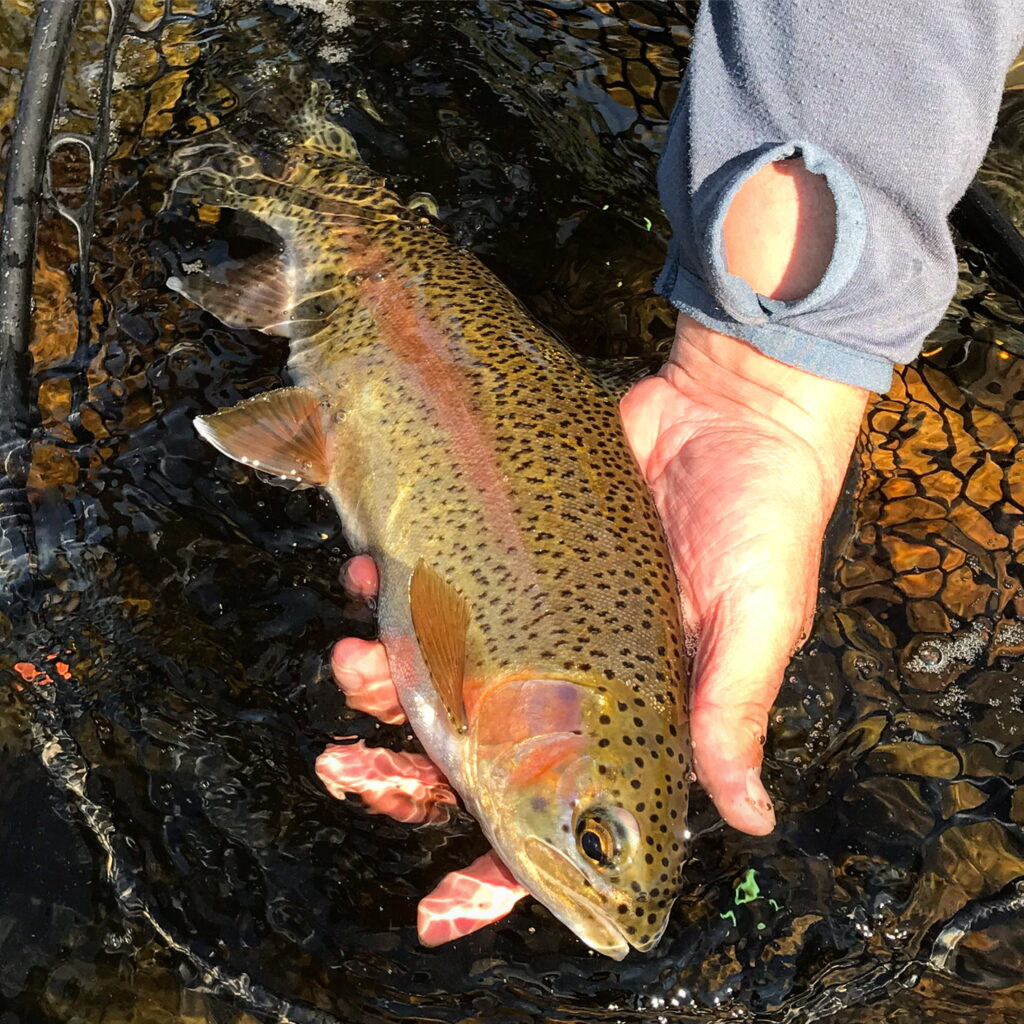Happy August! Colorado fishing season remains in full swing. You may start to hear chatter about water temperature in relation to fishing. Rightly so, almost every year, after a period of warm weather and little rain, concerns rise regarding the health of our magnificent fishery.
We break down fish health in terms of stress. Stress can come from the angler (wearing a fish out, improper care when handling, improper release, walking on trout redds) the environment ( hot water temps, diseases, lack of food), or other predators ( bigger aggressive fish, birds of prey, beavers, otters, etc.) . Stress is directly linked to mortality of fish. It is often a surprise to anglers that most fish that die, will do so after you release them into the water. Just because they were thrown back in, truly means nothing if a fish has endured too much stress.
Here are our top 10 considerations for protecting fish health while fly fishing:
- Use proper equipment to land fish efficiently and quickly. The act of hooking a fish causes stress for the fish. That surge of adrenaline, and then sometimes the calories and energy used when a fish swims around while on your line all are depleting resources. A proper weight rod and proper line with strong knots will help in efficiency.
- Don’t fish in water above 65 degrees! If water temps reach 65 degrees or higher, the oxygen levels drop in the water. This means the fish is already under a great amount of stress because it can’t breathe well. Fish in the morning when the river is at its’ coolest temp, and aim to be done by noon. We recommend a thermometer to check the water temps, as it’s concrete proof of whether or not you should fish.
- GET YOUR HANDS WET anytime you are handling a fish you don’t intend to kill. Most people don’t realize: the slime on a fish is part of its immune system! I’m not saying trout will get COVID-19, but they are vulnerable to disease and need a healthy immune system just like you and I!
- DON’T THROW THE FISH BACK! When you catch a fish, it can be disorienting for the fish. Always put the fish back in the water, head upstream, in a spot with a little bit of current to it. This will allow water to flush through the gills while the fish orients itself again. DO NOT LET THE FISH GO until it kicks out of your hands. When that fish kicks, it has been properly revived and released. Not before. If you see a fish dive bomb straight under a rock; this is not a good sign. Often, you can grab the fish and properly release it or if you can’t grab it, move your net or foot close to it to get it to swim.
- De-barb your hooks. I shouldn’t have to go into much detail about this one. A barb is for catching and not letting go. If you don’t intend to cook your kill, de-barbing is the proper thing to do.
- It is Colorado State law to fish with 3 hooks or less. Any more and you’re breaking the law, and it’s unsportsmanlike like. Most anglers don’t know this rule!
- Use a rubber net. The “old school” or “vintage” nets are death traps that peel the slime off of the fish. You may as well pet them with sandpaper. Also, any sun gloves, or thumbholes on sun shirts should be removed before touching a trout as these items peel the slime as well.
- If the fish is out of the water, it is not breathing. The fish just ran a marathon on the end of your rod. Consider that, and water temps, before asking the fish to hold its breath again so you can have a photo.
- The trout is not a Popsicle. Squeezing it won’t yield better results. It will probably make it squirm more. If you are going to take a quick picture, get the camera ready first. Then, cradle the fish gently; fingers under the belly and thumbs on top; and put it right back into the water. Also, “lipping” a trout, like you would a bass, will break its jaw, and there’s no reason to lip a trout.
- Know your “bag limits”. If you kill a fish, this goes towards your daily limit; even if you “let it go”.
Fly fishing is a great way to connect with nature. I hope this article empowers you to connect in a way that protects your incredible resource!






